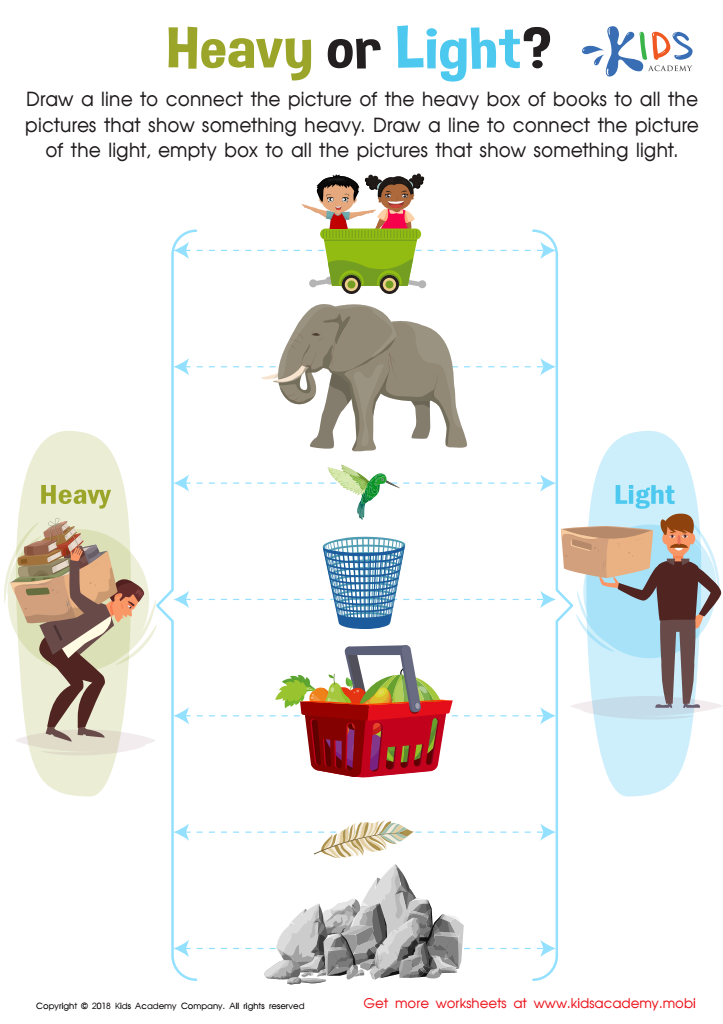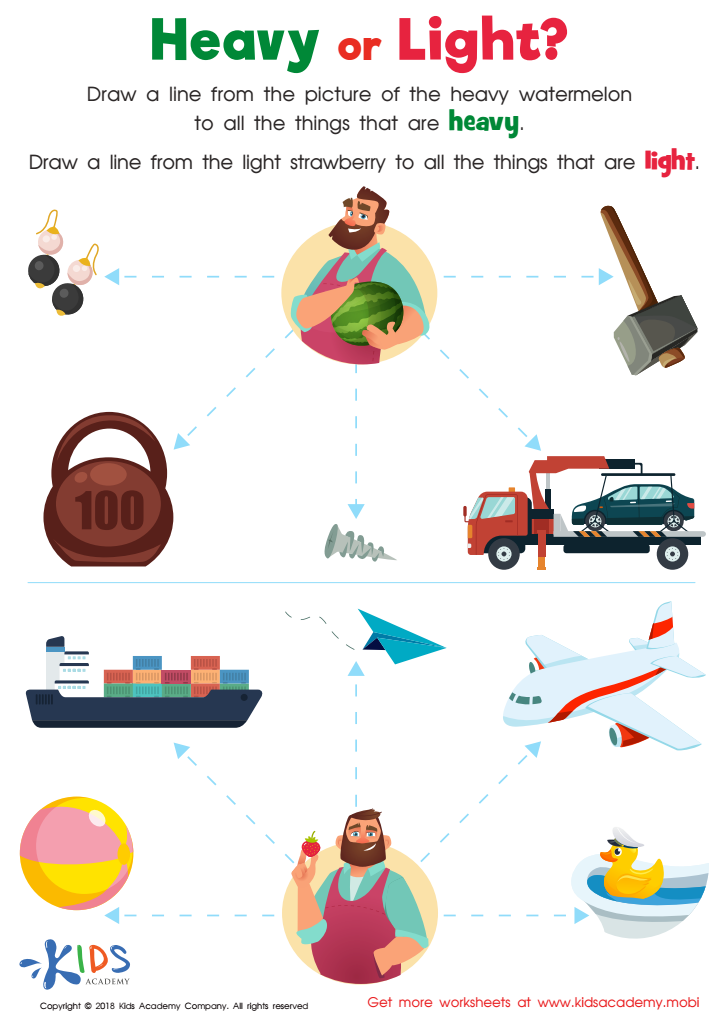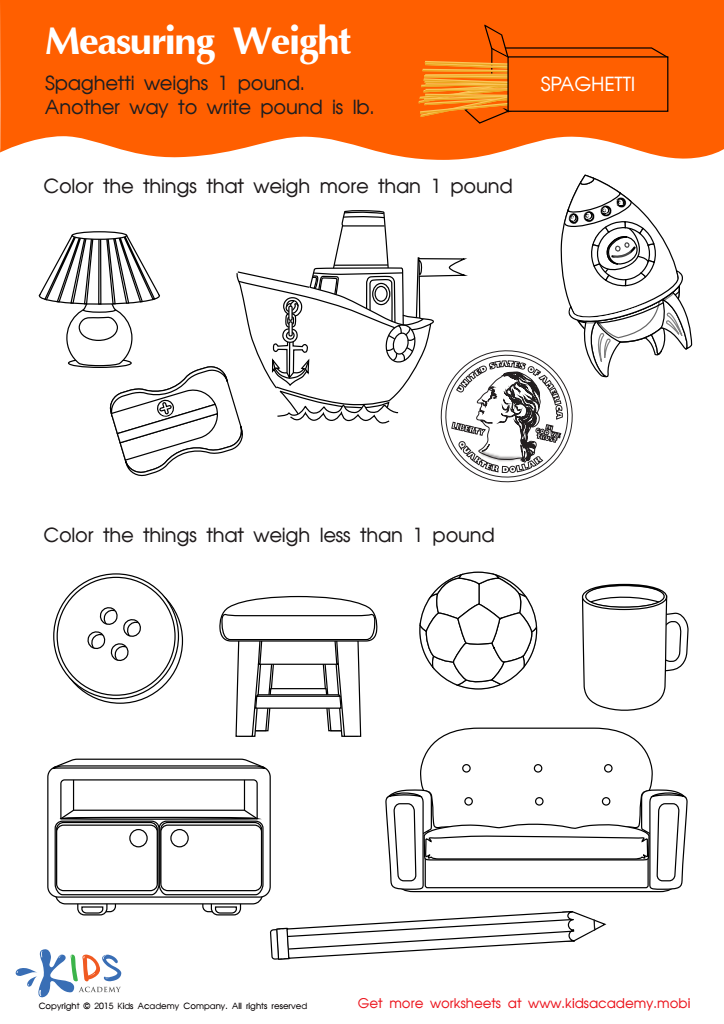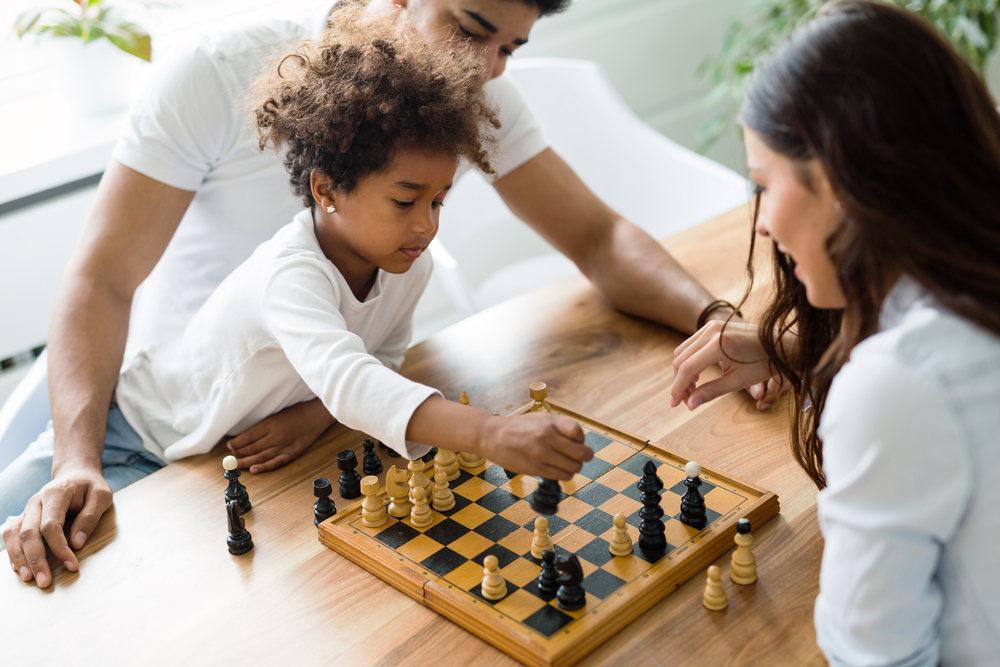Comparing object weights Worksheets for Ages 5-9
3 filtered results
-
From - To
Discover our engaging "Comparing Object Weights Worksheets" designed for kids aged 5 to 9! These worksheets are perfect for young learners to explore and understand the concept of weight through hands-on activities. Students will compare different objects, enhancing their cognitive skills while building a strong foundation in measurement. Each worksheet features colorful illustrations and simple tasks that promote critical thinking and problem-solving skills. Tailored to the developmental stage of early learners, these resources make weight comparison fun and interactive. Equip your child with essential math skills and boost their confidence with our thoughtfully crafted worksheets today!


Heavy or Light? Worksheet


Heavy or Light? Worksheet
Comparing object weights is a fundamental skill that helps children in ages 5-9 develop critical thinking, math, and scientific inquiry skills. During these formative years, children are naturally curious, and engaging them in hands-on activities with weights fosters their learning in a practical, interactive way.
Understanding weight comparisons bolsters a child’s ability to classify and categorize objects, enhancing their cognitive development and ensuring they grasp foundational concepts in mathematics, such as measurement and ratios. It can make abstract concepts tangible, igniting a fascination with science and fostering a spirit of inquiry.
Furthermore, discussing weights helps children comprehend everyday practical applications, such as cooking or understanding quantities in shopping, thereby making math relevant to their daily lives. It encourages teamwork and collaboration as children often work in groups during these activities, promoting vital social skills.
Moreover, parents and teachers can use weight comparisons to instill a sense of balance and equality, teaching kids about fairness and justice. Overall, comparing object weights serves as an engaging gateway to a multitude of academic and personal skills, making it an important focus for children in early education.

 Assign to My Students
Assign to My Students


















